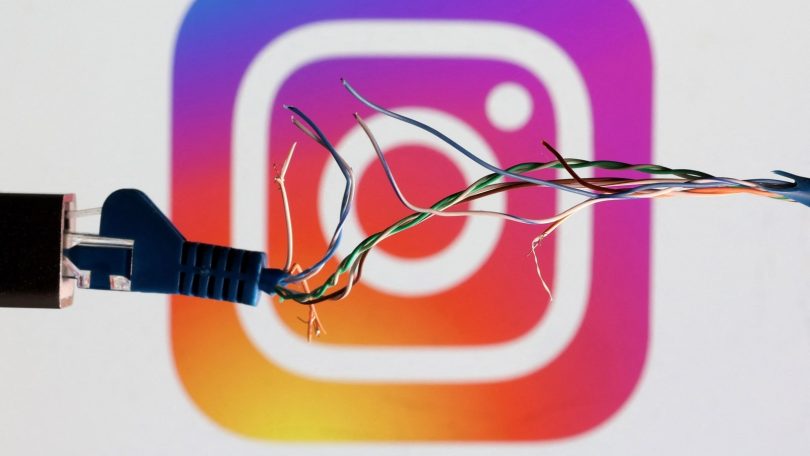[ad_1]
Most of us take internet connectivity for granted. The specifics of a global infrastructure that brings the internet to our phones, PCs and smart homes don’t mean much, as long as the Wi-Fi router isn’t blinking a red warning light. We only really seem to wake up from this persistent digital hypnotic state, when Facebook, Instagram, Google’s services or X, go on the blink.

It happened a few days ago when Meta’s Facebook and Instagram were unavailable for a few hours. Some Meta Quest headsets too, went offline. X was working (somehow), and the world was complaining. Later, Meta confirmed it was a “technical issue”, which since resolved, signified all is well with the world again. Influencers had their jobs again. What escaped the attention of most is something that occurred a few days prior, which Hong Kong telco HGC Global Communications called an “exceptionally rare occurrence”.
Four of the 15 undersea cables, or submarine communication cables (or subsea cables), in the Red Sea were damaged. By their estimates, as much as 25% of data traffic between Europe and Asia stands disrupted. Some cables are owned by Saudi Telecom Company while the rest are by consortiums of telecom operators. Traffic is being rerouted, while repairs are expected to take some time (an as-yet undefined reason for this damage, further complicating matters) and there is also the small matter of permissions, and safety, in an area frequented by Houthi rebels.
Tech giants Google, Microsoft, Amazon and Meta have, over the years, funded subsea cable infrastructure too. In 2016, Facebook, Microsoft and Telefonica’s Telxius group announced investments in a new trans-Atlantic submarine cable, called MAREA cable, between Virginia Beach in the US to Bilbao in Spain.
Google has figured prominently with investments in as many as seven important cable networks, one example being FASTER (11,629 km with landing points in Japan, Taiwan and the US). Meta is a part owner in three major subsea cable infrastructure projects, including the Asia Pacific Gateway (APG; 10,400 km length and landing points in China, Japan, Malaysia, Singapore, Taiwan, Thailand and Vietnam. Microsoft has some level of ownership in as many as four networks, while Amazon has invested in the Hawaiki and Hawaiki Nui infrastructure.
Big tech investment underlines the importance of undersea fibre optic submarine cables, which carry about 99% of all the world’s internet traffic. The ones under the Red Sea aren’t the only pieces of this infrastructure. If you look at a map of the global internet backbone these cables provide to countries and continents, it is a complex, dense web of colourful lines crisscrossing across the map of the world (this would make for very cool wall art).
India’s stakes are high, and there is momentum to add to the infrastructure that’s already there – it’ll minimise disruptions (such as the Red Sea cable damage) and provide routing alternatives (think of these as parallel roadways; you have the option to switch if one is inaccessible). The latest addition is the India Asia Xpress (IAX), which with 5,791 km length, and is owned by China Mobile and Reliance Jio Infocomm. It has landing points in Mumbai and Chennai, among others. In 2025, the two owners will also flip the switch on the India Europe Xpress (IEX), its 9,775km length with landing points in Italy, north Africa, Saudi Arabia and Mumbai.
Since 2011, the Europe India Gateway (EIG) has been active, touching points from the UK, through North Africa, and West Asia and ultimately landing in Mumbai. A cursory glance of the database at TeleGeography tells us as many as 11 cable systems already land in Mumbai, with landing points across all other continents – and six more are expected over the next couple of years. In Chennai, more than five subsea cable systems find a landing point crisscrossing the globe, and more will be active by 2025.
Globally, there are more cabling systems being put together. There’s the Far North Fiber project which is expected to be active sometime in 2017, and its 17,000km cable length will have landing points in Ireland, Japan, Norway and the US. Around the same time, the Asia Connect Cable-1 and the Nome to Homer Express (NTHE) will also be active in the northern hemisphere. These are just some examples.
Next time you use the internet, spare a thought for the colossal infrastructure that runs through the world’s seas and oceans, bringing us the connectivity we take for granted.
Vishal Mathur is technology editor for Hindustan Times. Tech Tonic is a weekly column that looks at the impact of personal technology on the way we live, and vice-versa. The views expressed are personal.
[ad_2]
Source link








